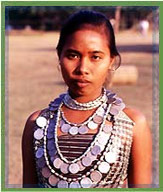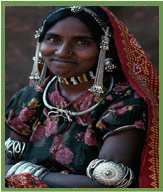by MARKANDEY KATJU



 “The original inhabitants of India, as it is believed now, were the pre-Dravidian tribal people such as the Bhils, the Santhals, the Gonds and the Todas. Called Adivasis or Scheduled Tribes, they form hardly 8 per cent of the population today.” Santhal (top left), Bhil (top right), Gond (bottom left), and Angami (bottom right). PHOTOS/Eco India
“The original inhabitants of India, as it is believed now, were the pre-Dravidian tribal people such as the Bhils, the Santhals, the Gonds and the Todas. Called Adivasis or Scheduled Tribes, they form hardly 8 per cent of the population today.” Santhal (top left), Bhil (top right), Gond (bottom left), and Angami (bottom right). PHOTOS/Eco India
India is a country of mostly immigrants who came to the country over the past 10,000 years.
We are all Indians, but do we know what India is? I am presenting five theses for consideration.
(i) India is broadly a country of immigrants, like North America. Over 92 per cent of people living in India are not the original inhabitants of India. Their ancestors came from outside, mainly from the north-west.
(ii) Because India is a country of immigrants like North America, there is tremendous diversity in India – so many religions, castes, languages, ethnic groups, etc.
(iii) Despite the tremendous diversity in India, by the interaction and intermingling of these immigrants who came into India a common culture emerged in India, which can broadly be called the Sanskrit-Urdu culture.
(iv) Because of the tremendous diversity in India the only policy that can work and hold our country together is secularism and giving equal respect to all communities.
(v) India is passing through a transitional period, from a feudal agricultural society to a modern industrial society. This is a very painful and agonising period in history. If we read the history of Europe from the 17th to 19th centuries we find that this was a horrible period in Europe. Only after going through that fire, in which there were wars, revolutions, turmoil, intellectual ferment, chaos, social churning, etc., modern society emerged in Europe. India is at present going through that fire. We are going through a very painful and agonising period in our history, which I think will last for around another 20 years. I may now briefly discuss these theses.
…
Panini rationalised the crude Sanskrit prevailing in his time and meticulously systemised it so as to make it a powerful vehicle for profound and abstract ideas.
Science requires precision. Panini made Sanskrit a powerful language in which scientific ideas could be expressed with great precision and clarity, and it was made uniform all over India so that thinkers in one part of the subcontinent could interact easily with thinkers in another part. That was his great contribution.
Take, for example, the alphabet in the English language. The letters have been arranged in a haphazard manner. Why is B followed by C? Why is D followed by E? There is no reason why F comes after E, P is followed by Q, or Q is followed by R.
In Sanskrit, on the other hand, Panini arranged the alphabet in a scientific manner. For example, take the consonants. There is a sequence ka, kha, ga, gha, na (called the ‘ ka varga’). All these sounds come from the throat. Also, the second and the fourth consonants in this sequence are what are known as aspirants. An aspirant means a consonant in which ‘ha’ is added. The second and fourth consonants in every sequence (of five consonants) are aspirants.
The sounds in the second sequence of five consonants (‘ca varga’) ca, cha,ja,jha,ha, all come from the middle of the tongue. The sounds in the ta varga’, ta, tha, da, dha, na, come from the roof of the mouth; the sounds in the sequence ta, tha, da,dha, na come from the tip of the tongue; the sounds in the sequence pa, pha, ba, bha, ma come from the lips.
We can see how scientifically these consonants are arranged. Thus, even in such a simple thing as the arrangement of letters in the alphabet a careful and scientific study was done.
The second contribution of Sanskrit to the development of rational and scientific thinking was the Nyaya Vaisheshik philosophy. There are six classical systems of Indian philosophy, Nyaya, Vaisheshik, Sankya, Yoga, Purva Mimansa and Uttara Mimansa, and three non-classical systems, Buddhist, Jainist and Charvaka. Out of these nine systems eight are atheistic as there is no place for God in them. Only Uttara Mimansa, which is also called Vedanta, has a place for God in it.
Frontline for more